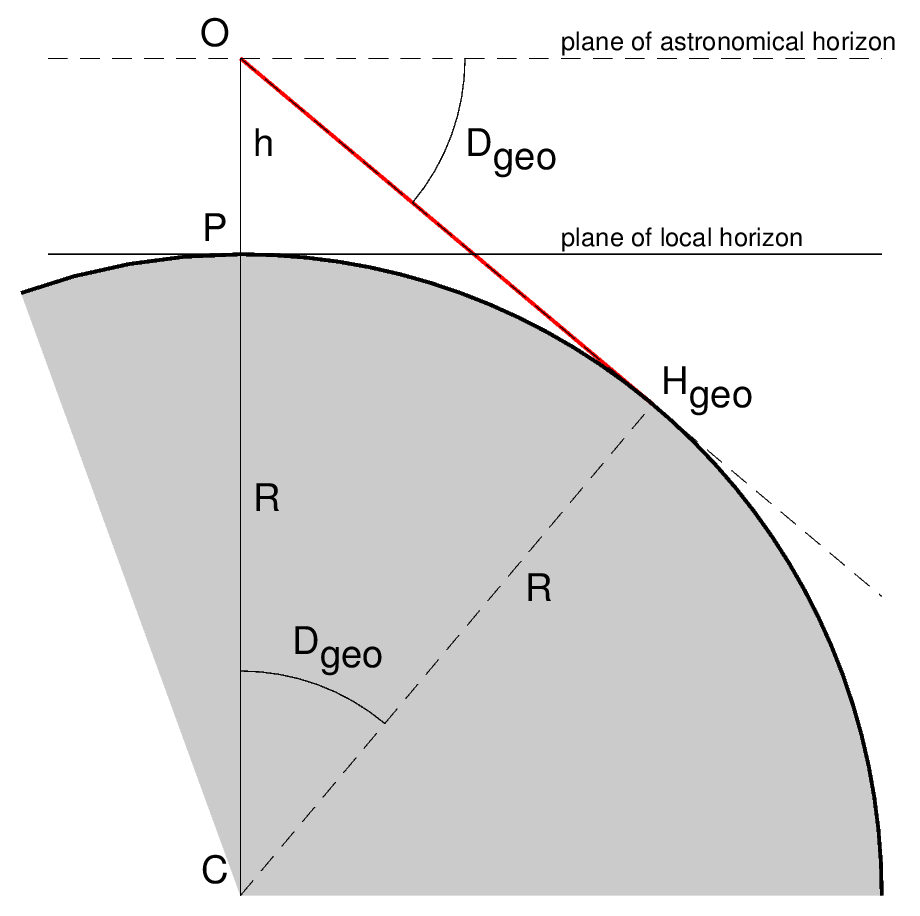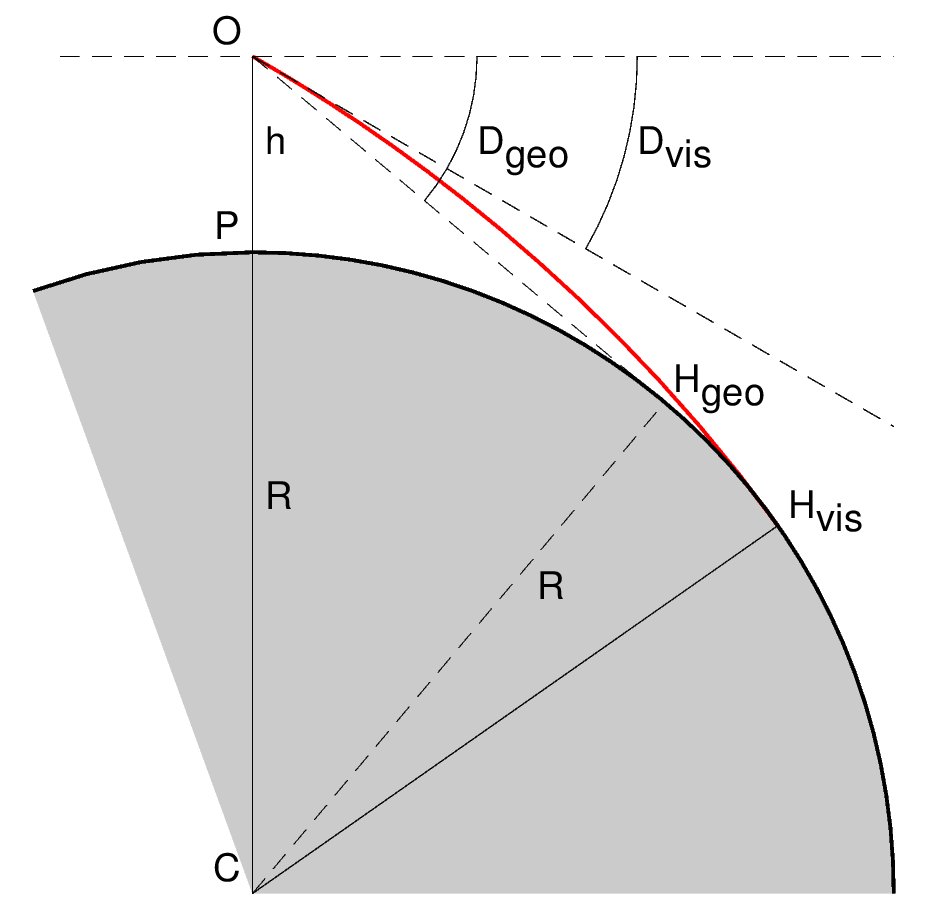Notes on the Dip of the HorizonAt sea, the reference for measuring Altitudes of Celestial Objects is the horizontal plane tangent to the surface of the Earth at the location of the observer. Although this plane is closely related to the visible Line-of-the-Horizon, these two things are not completely identical. The following discussion deals with two effects that ultimately make the difference between the astronomical and apparent plane of the horizon: the effects of dip atmospheric refraction. Dip of the Horizon without the Effect of RefractionIf - in a first approach - the effect of atmospheric refraction is not taken into account, light will always travel along a straight line also on a large scale. This approach allows for a simple geometrical model to calculate the dip of the horizon. The picture below shows the setting for an observer "O" standing some height "h" above the surface of the Earth at position "P" looking at the horizon at point "Hgeo". In order to show the dip effect in this picture, the height "h" is greatly exaggerated compared to the radius of the Earth "R". The astronomical horizon is the plane through the observer's eye parallel to the plane of the local horizon. The apparent horizon is the plane through the observer's eye and the Line-of-the-Horizon in the direction in which the observer is watching. Because of the observer's height "h", the apparent horizon lies below the astronomical horizon: it is dipped by the angle "Dgeo" and the observer observes the Line-of-the-Horizon at a point "Hgeo".
Without the optical artefacts of the atmosphere, the line-of-sight from the observer to the limb of the Horizon (shown in red) is a straight line, and the geometry of the dip situation is simple and can be solved in an analytical way. Taking into account the optical effects of refraction in the lower layers of the atmosphere, the situation will become more complex as will be discussed in the next section. Dip of the Horizon including the Effect of RefractionThe effect of refraction results in the line-of-sight from the observer to the limb of the Horizon (red line in the diagrams) being curved instead of a straight line. Usually, this line is concave towards the Earth. This has the visible effect, that the apparent or visible horizon "Hvis" is further away than the geometrical horizon ("Hgeo") and that the resulting apparent plane of the horizon is dipped less than the geometrical plane of the horizon. The resulting dip angle "Dvis" is lower than the dip angled calculated from the simple geometrical setting in the previous diagram ("Dgeo"). Also, there is no simple equality between dip angle and Distance-to-the-Horizon any more.
This is equivalent to introduce an fictitious effective curvature of the Earth which is the
real curvature 1/R lowered by the curvature of the sight-of-line to the horizon:
the Earth's curvature is 1/R, the sight-of-line's curvature is k/R, and the difference is (1-k)/R.
In other words, everything is the same with refraction as it would be on a fictitious planet
with a radius of R/(1-k) and no refraction. So as long as k small, the situation isn't greatly
changed by refraction.
The value of k depends on the atmospheric parameter temperature and pressure. Under "normal" conditions - when the Standard Atmosphere is a fair approximation - k is about 1/6 to 1/7. When there is a strong temperature inversion, k can be as large as 1. Values larger that 1 correspond to ducting condition: if the observer is inside the duct, a pseudo-horizon appears above the astronomical horizon, so the dip of this apparent horizon is negative, a remarkable phenomenon that is observed occasionally. |
| Cover << Sail Away << Celestial Navigation << Correction Tables << . | last updated: 08-Apr-2016 |

